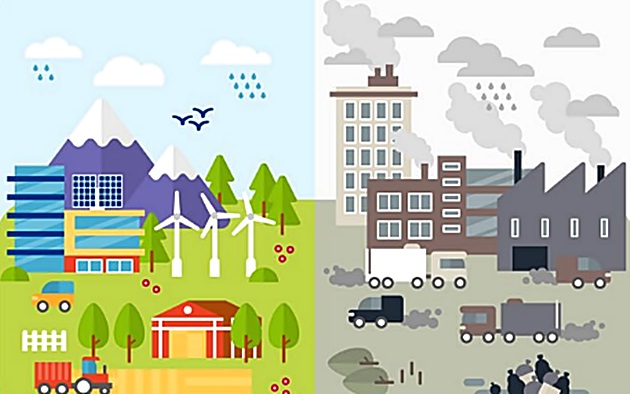
Real Estate Increasingly Bears the Cost of Extreme Weather Events
As extreme weather events become more frequent and severe, the cost of repairing damages and restoring normal operations continues to rise.
Billions and Billions of Dollars
In 2024 alone, 27 extreme weather events in the U.S. caused an estimated $182 billion in damages, according to NOAA data.
Even before storms, heatwaves, or floods occur, building owners and occupants now face rising insurance premiums.
In the U.S., for example, insurance is the fastest-growing expense for property owners, with ripple effects on operating income and long-term asset values. In some high-risk coastal regions like California and Florida, insurers have withdrawn from certain local markets or limited coverage after years of escalating losses.
State-sponsored programs, such as California’s FAIR plan, serve as a last resort. However, wildfires in Los Angeles have raised concerns about whether they can cover massive damage bills.
"Rising insurance costs are becoming a significant challenge for property owners, especially in markets facing direct climate hazards. Traditionally, insurers accounted for a 2-3% annual increase in expenses, but premiums are rising much faster due to the increasing financial toll of climate events," says Jaime del Álamo, Head of ESG Value & Risk Americas at JLL.
In the U.S., commercial real estate premiums have risen 88% in the past five years, according to JLL. By 2030, the average monthly cost of insuring a commercial building could reach $4,890, up from $2,726 in 2023, Deloitte estimates.
Other Regions Struggle with Rising Extreme Weather Costs
In the European Union, weather and climate-related extremes caused an estimated €738 billion in economic losses between 1980 and 2023, including €162 billion between 2021 and 2023, according to the European Environment Agency.
In China, floods in 2023 resulted in over $32 billion in economic losses, according to Aon, while rising insurance prices in Australia have significantly impacted residential coverage.
In response to extreme weather impacts, Italy has passed a new law requiring climate insurance for all buildings starting January 1, 2025.
"Climate risks have driven regulatory changes to reduce the economic burden on local governments by addressing insurance coverage gaps and enforcing stricter building codes to enhance resilience," says Wahib Ghazni, Senior Product Manager and Lead Financial Economist at Jupiter Intelligence.
Starting in 2025, Paris will implement new "bioclimatic" urban planning regulations to create more climate-resilient buildings. These include low-carbon building materials, renewable energy generation for structures over 1,000 square meters, and green spaces on rooftops.
Resilience Measures
Many insurers now require property owners to implement resilience measures to qualify for coverage or secure better rates. These physical adaptations—such as flood barriers, storm shutters, impact-resistant windows, reinforced roofing and drainage systems, and fire-resistant materials—can help mitigate the risk posed by extreme weather events.
Longer-term risks, such as structural damage from prolonged droughts and heatwaves, could also impact future insurance costs.
"Insurers are grappling with how to address chronic risks from extreme heat and shifting precipitation patterns. Resilience measures can help shield property owners from these long-term risks and manage future costs," says John Thigpen, VP of Sustainability Services at JLL.
Alternative insurance products, such as parametric insurance—which pays out predefined amounts based on specific disaster triggers—can help investors manage expenses. Separate deductibles for different events can also help control costs, while detailed risk assessments can factor in resilience measures.
"Advanced climate risk assessments that evaluate exposure to acute and chronic physical hazards across multiple warming scenarios can support property owners in aligning their insurance policies with their actual climate risk profile," says Thigpen.
Data-Driven Modeling to Manage Climate Risk
Advanced climate modeling is becoming a key tool for managing insurance costs. These data-driven models predict potential climate hazards at the asset level and calculate the impact of different resilience measures.
"Traditional catastrophe models rely on historical data, but forward-looking forecasting models use evolving, non-stationary climate trends to improve accuracy in asset risk assessment and insurance pricing," says Ghazni.
"These models also provide a climate-adjusted asset value, incorporating future risks into asset valuations—an increasingly crucial factor for banks and investors."
In California, new regulations allow insurers to use forward-looking catastrophe models instead of historical data to set premiums, highlighting the critical impact of future climate risk in underwriting.
Climate Risk Insurance Is Reshaping Asset Strategies
The growing impact of climate risk insurance is also shaping asset strategy. Investment manager Wafra, for example, incorporates climate risk modeling into its underwriting, guiding where it invests and how resilience measures are allocated.
"Banks are increasingly concerned about climate-related risks and associated insurance costs, whether due to regulatory non-compliance or assets exceeding risk thresholds. This is leading to more cautious lending practices, such as lower loan-to-value ratios or even the denial of financing for high-risk properties, which will ultimately affect asset valuations," says del Álamo.
The Bottom Line
For now, some locations bear the brunt of climate change more than others. But as extreme weather becomes more frequent and widespread, enhancing resilience will be essential for all buildings to manage growing climate risk, even in temperate climates.
Evolving green lease models are fostering greater collaboration between owners and tenants to integrate climate resilience into building development, design, and operations.




